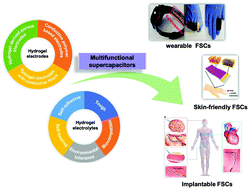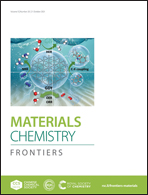Functional hydrogel-based supercapacitors for wearable bioelectronic devices
Abstract
The increasing popularity of portable/wearable multifunctional electronic devices has highlighted the requirement for energy storage alternatives to accommodate their power supply needs. Hydrogel based supercapacitors are a class of new energy storage devices, characterized by multifunctionality, such as high flexibility, stretchability, and biocompatibility, thus constituting promising candidates for this purpose. Hydrogels can be employed as electrodes/electrolytes, which are crucial factors determining both the energy storage capabilities and functions of supercapacitors. In this regard, hydrogels have been meticulously investigated as components of supercapacitors because of their intriguing structures, comprising a crosslinked network of polymer chains with interstitial spaces filled with the solvent water. This feature endows hydrogels with soft and wet characteristics, which are highly beneficial for multifunctional supercapacitors for portable/wearable electronic devices. Moreover, their versatile chemical properties allow the introduction of specific functions, including long-term adhesiveness and tissue affinity. In this work, we review novel hydrogels for multifunctional supercapacitors applied in bioelectronics. Additionally, the existing challenges in current technologies and research are highlighted and discussed with the hope of inspiring future studies.

- This article is part of the themed collection: 2021 Materials Chemistry Frontiers Review-type Articles


 Please wait while we load your content...
Please wait while we load your content...